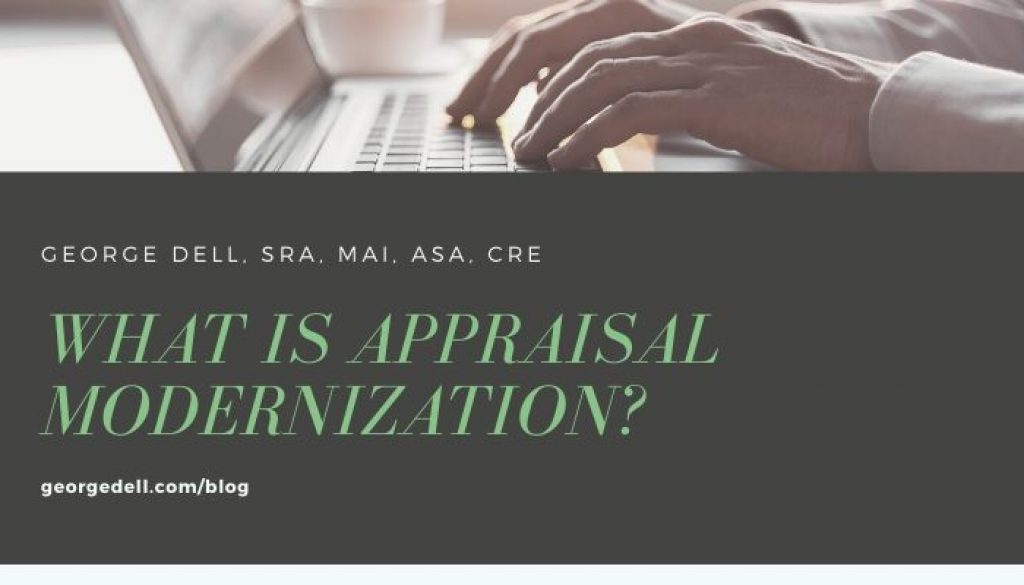What does it mean “appraisal modernization?”
[This is Part I of a series which continues for the next two years, on a monthly basis. We will consider not only the ideal future, but the path to get there – for both users and providers].
This is silly. We just make appraisal more modern!
Hmmm. So, what is modern? And what is an Appraisal?
Modern: Something modern implies that something is new and has replaced something old.
Appraisal: An opinion of value, or the process of developing an opinion.
So, a modern opinion doesn’t seem to make sense. It has to be the opinion process that needs to be made new. In order to think about making the process more modern, we might look to the old appraisal process itself. In an appraisal, we walk through a process:
- Identify the problem – assumptions, the client’s intended use, date, value definition, and property characteristics.
- Identify and analyze the relevant legal, physical, and economic factors (the market and subject)
- There are also special rules for “market value” (actually market price) opinions, such as using one or more of the required ‘approaches,’ and judging weight to be given each. And finally judging how relevant these prescribed methods were.
It may be important to understand that market value is not really a measure of value at all. It’s a measure of market price, whether or not this has anything to do with actual risk or real usefulness. Worse yet, (before the “great recession”) groupthink caused us to ignore five of the seven key elements of “market value” as given in the Appraisal Foundation Advisory Opinion.
It appears that in order to ‘modernize’ appraisal, we need to reconsider some underlying assumed assumptions. Value is only the worth of future benefits. “Worth” can be of four types:
- Collateral lenders care about protection from future loss;
- Investors/speculators care about potential for future gain;
- Consumers care about personal use as a home or business;
- Equity agents, such as assessors and judiciary care about fairness.
Future benefit is mostly the ‘end game’ for each of the above. The lender simply wants a future interest income and recovery of the principle. The investor wants to sell eventually (at some future time) for a gain. The consumer wants the use of the property over a future period of time. Equity enforcers strive for justice or equalization.
It appears that today’s price is only half the formula. Appraisals look at half the formula, and not at all at future benefits. (Like ‘sustainable’ or ‘fundamental’ value.)
Half the formula! Aha! Is it possible that appraisal modernization has something to do with the other half? We have to look at that. The second half. And, it appears we will have to deal with the first half. People are used to it, and it’s a starting point as well as a legitimate measure.
This first look at “appraisal modernization” tells us we may very well have to look at some underlying assumptions of “appraisal” as it is defined. At the very definition of “market value” as we know it. At the very purpose(s) of valuation. And especially at what “appraisal” delivers – in terms of modern technology, of compete data sets, of machine-brain optimization, of visualization means, and of the very basis of what is needed for the public trust. For real. Not as a pipe dream. Not my opinion. From a real research paradigm. For real.
Appraisal modernization comprises both education and software. Either one, alone, does not seem to work.
For you who are interested, you may begin this journey to the future with us. The Valuemetrics.info curriculum (Stats, Graphs, and Data Science1 class, open-source (free) software solutions, and the paid-subscription TAAR (The Asset Analyst Report) provide a path, a solution, an opportunity, and a place to belong. Participants also (invitation only) may belong with the CAA (Community of Asset Analysts).

January 7, 2020 @ 10:50 am
George….this line of thinking makes so much sense we need more forward minded people like you.